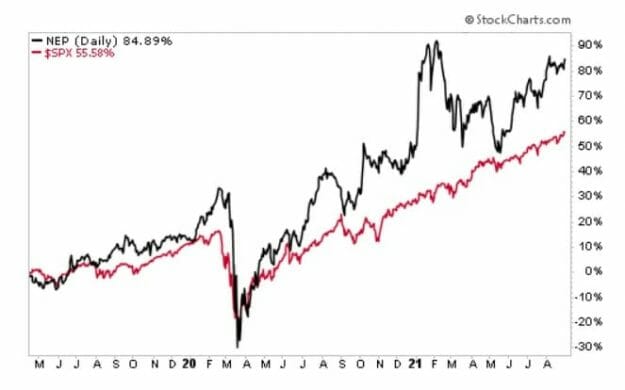| You see, for the past several years, it seems when most regular investors (and much of the financial media) isn't spending its time chasing the latest trend in the market, they're complaining about the low yields offered by the market. I get it. We all want growth - even those of us who may prioritize income first. And while the Fed has kept interest rates near zero since the onset of the Covid-19 pandemic (and they were already low before that), the average S&P 500 stock's yield has also also been ridiculously low. In fact, for several years prior to the pandemic, it was understood by many that the average S&P stock yielded about 2%. Now, it's even less... But I've made it my mission to tell investors that they don't have to settle for these low yields. It is possible to find higher yields than this - without sacrificing quality, safety, or even capital appreciation. What's more, you'll often find that these stocks offer plenty of appreciation as well. It's all about knowing where to look... And today, I want to give you an example of exactly what I'm talking about. Yieldcos 101 While NextEra Energy Partners (NYSE: NEP) isn't among the final five stocks I selected as absolute favorites for my latest report, it certainly fits the bill. For those who are unfamiliar, NEP is what's known as a "yieldco". I'll get to the reasons why I like NEP specifically in just a moment. But first, you need to understand what makes yieldcos unique in order to understand their appeal. Yieldcos are, in short, an overlooked class of income-bearing stocks whose payouts are supported by long-term electricity purchase agreements They got their start back in 2012 when Brookfield Asset Management (NYSE: BAM) launched a separate tracking company created for the sole purpose of operating its various green energy assets. That subsidiary was called Brookfield Renewable Energy Partners (NYSE: BEP), which hit the market with a bang and has been expanding ever since. Today, BEP owns hundreds of wind farms, hydroelectric facilities, and solar plants representing 17,000 megawatts of generating capacity from Brazil to China. NEP was built from the same mold. In much the same way that midstream energy companies sell pipeline space to oil and gas shippers, yieldcos sell electricity output to utilities and other buyers under long-term power purchase agreements (PPAs). These offtake agreements are often in force for 20 years or more, providing steady, recurring income. Yieldcos always have a larger parent (or sponsor) that maintains an equity ownership interest. The sponsor often bears the expense (and permitting headaches) associated with the construction of these costly plants. But once they are up and running, variable operating expenses are minimal - the sun and wind do most of the work. And with electricity buyers already lined up, yieldcos haul in predictable, low-risk cash flows. You'll typically see it referred to as cash available for distribution (CAFD), which is the pool of earnings available for dividends after the payment of principal and interest and maintenance expenses. Up to 90% of CAFD is disbursed through regular quarterly dividend payments. The Case For NEP I talked about yieldcos in a lot more depth back in July. And I even threw out a few names for investors to consider. So if you'd like to know more, then I suggest reading that piece here. A lot of what I shared in that piece was updated from information I shared with my High-Yield Investing readers back in April 2019. In that issue, we ultimately went with NEP. You can see how it's treated us since then...  I still like NEP today. With the aid of acquisitions, NEP is forecasting CAFD to be running at an annualized pace of $600 to $680 million by year's end (management expects to hit the upper end of that range). In turn, that is fueling quarterly distributions of $0.6625 per unit (or $2.65 annually). That's a 15% increase from what we were getting 12 months ago. And management is confident that dividends will continue to rise 15% annually over the next several years. Not many companies have the confidence (or cash flow visibility) to project dividend growth through 2024. For now, annual payouts are expected to hit $2.80 per unit by next quarter - which would bump the yield even closer to 4%. Throw in the advantage of tax-deferred growth, and this green energy stock remains an attractive proposition for income hunters. In the meantime, if you want to know about the absolute best income picks you can buy right now (or in any market), then you should check out my latest report... After months of painstaking research, my team and I have unearthed a group of five "bulletproof" high-yielders that have weathered every dip and crash over the last 20 years. Every single one of these picks has a strong balance sheet, a proven track record of holding up in any market, and they continue to raise their payouts each and every year. And they all offer yields of 5% or more right now... Click here for more details. |
没有评论:
发表评论